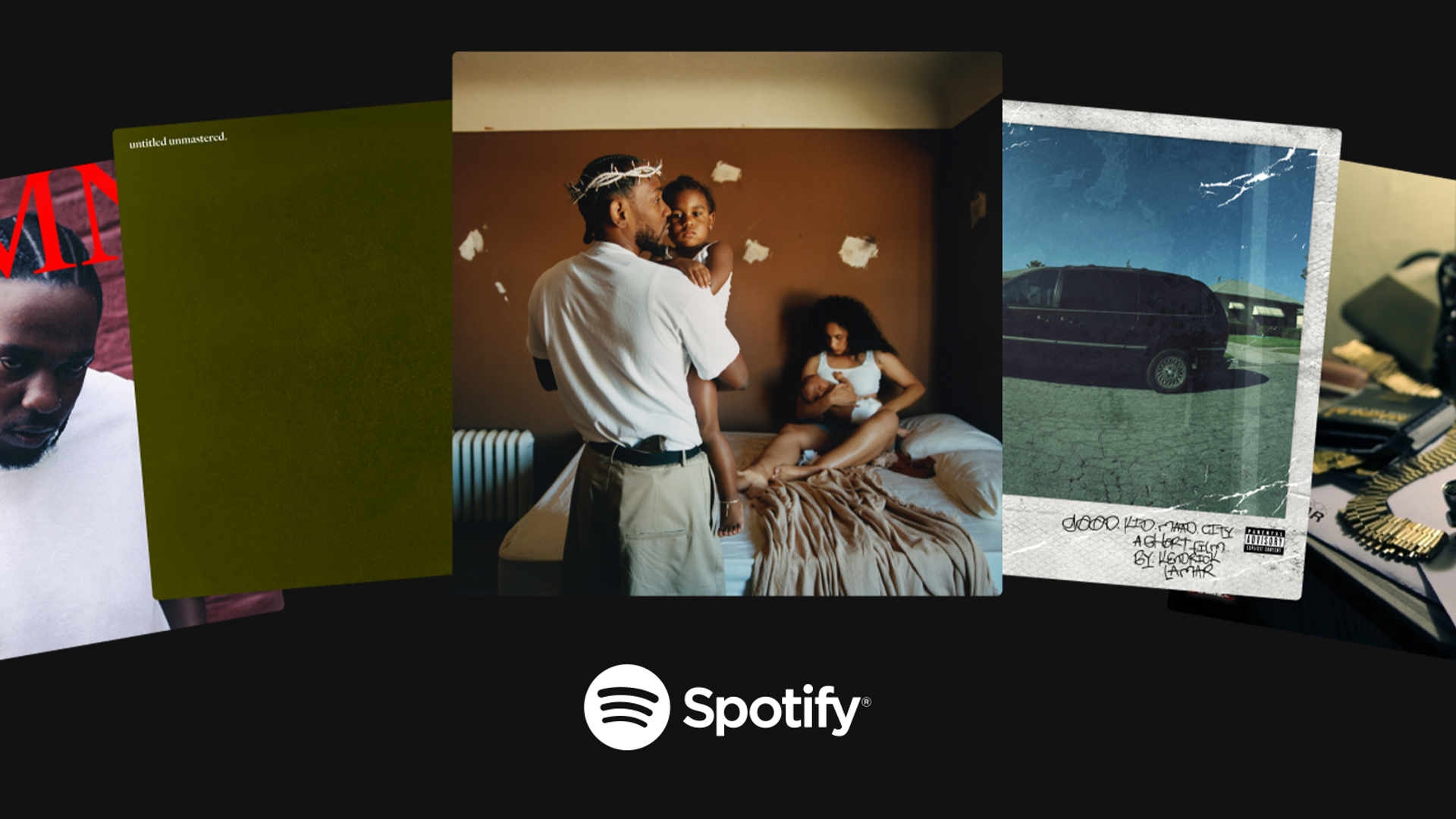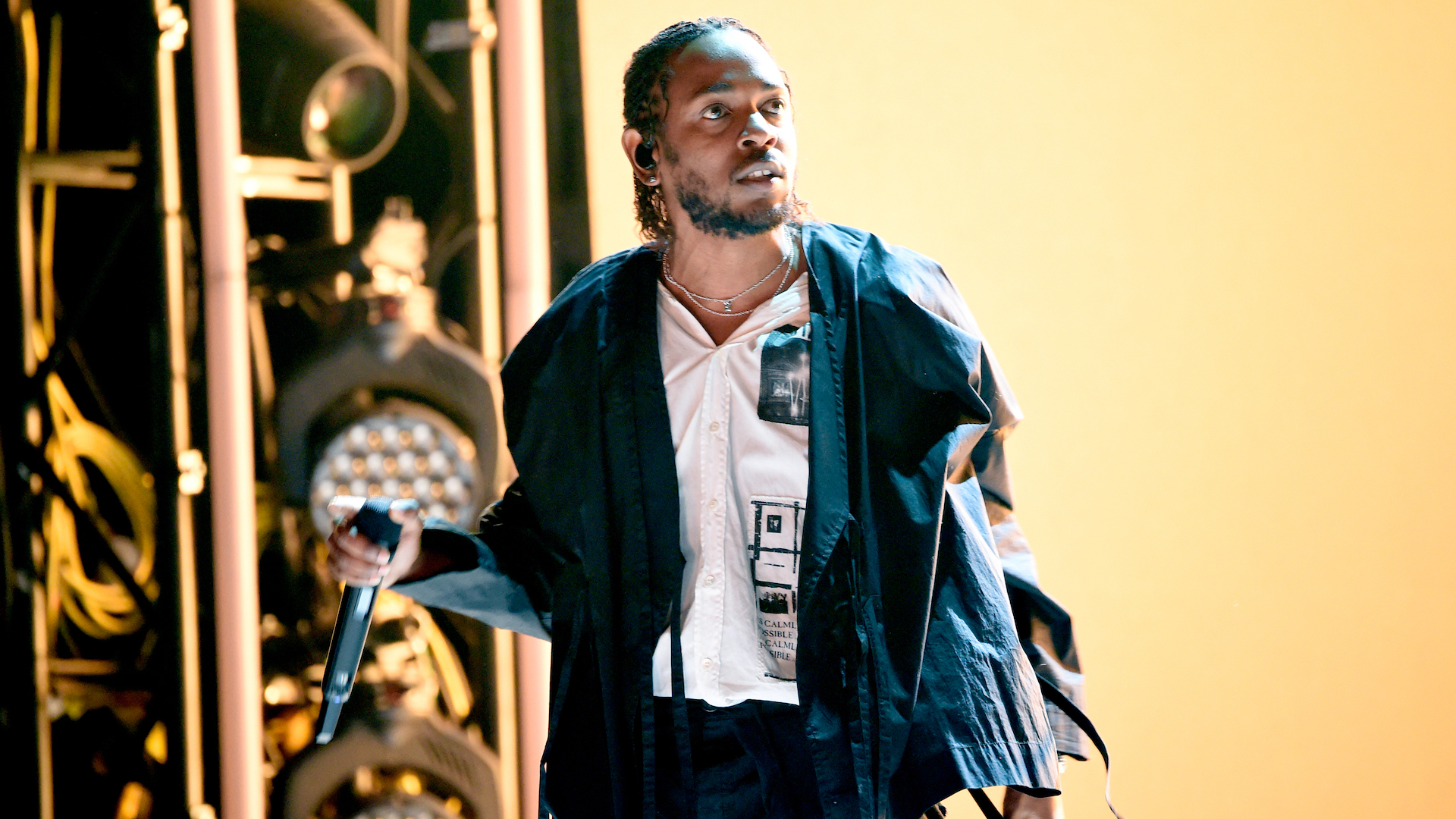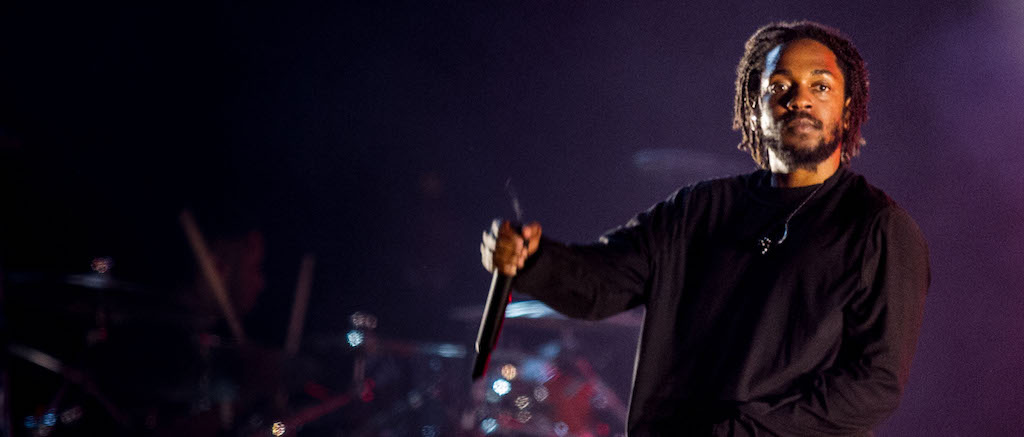Kendrick Lamar’s status as one of the greatest MCs of our time is undisputed. Growing up listening to West-Coast icons such as Snoop Dogg or 2Pac, he has solidified himself as an icon of our generation. The mastermind is more than just a musician. He architected the explosion of Top Dog Entertainment (TDE) as a minority owner, and has collaborated with a variety of film or clothing brands over the past five years.
Growing up in Compton, Lamar never subscribed to the traditional lifestyle of those around him. Achieving straight A’s in high school, his friends described him as a recluse that often spent time in alone. The creative icon clearly had a vision, one that began with a series of mixtapes which he began releasing at the age of 16. Signing with TDE at 17 years old, he was soon collaborating with fellow California MCs such as Jay Rock. Co-signed by Lil Wayne, he released debut ‘Kendrick Lamar EP’ in 2009. Lamar would jump leaps and bounds between every project, unwavering in his psychedelic blends of R&B and rap.
The Compton-born rapper would go on to release a number of Grammy-nominated classics, from the banger-heavy ‘Good Kid M.A.A.D City” to the socially conscious ‘Mr. Morale and the Big Steppers.’ So, how do you organize his records into ranked list? It certainly wasn’t easy, and there isn’t one right answer. Similar to the likes of Tyler, the Creator or Kanye West, everyone is going to have a different opinion. However, we did our best to rank Kendrick Lamar’s albums from worst to best.
8. ‘The Kendrick Lamar EP’
Kendrick Lamar’s first official release, the self-titled EP is an engaging listen for fans who want to hear how his sound and lyricism has progressed over the years. Featuring fellow West-Coast MCs like Schoolboy Q and BJ The Chicago Kid, the timid personality is boastful on the mixtape. Referencing the Grammy’s multiple times, there was a clear path to fame that the 21-year old was pursuing.
However, it’s far more than a traditionally boastful or trap-inherent record. Surprisingly mature for his age, he has intricate takes on being raised in the violent streets of Compton. Talking about his Uncle Tony or his tumultuous home life, many of the topics referenced would be discussed in more detail on ‘Good Kidd Maad City.’ In addition, he doesn’t shy away from more melodic tracks that would be more fully-fledged out on ‘Section 80.’
Lamar isn’t commanding beats and switching up his flows like he would on future projects. However, his ambition is apparent and attractive as a listener. Straining for start to finish, it’s an admirable project that would set the groundwork for the remainder of his career. The record’s final track concludes with external voices saying “Who are you? What are you trying to say? What are you trying to accomplish?” These are all questions he’s still navigating, which explains the half-baked nature of the mixtape’s sound and lyricism.
7. ‘Overly Dedicated’
At 23 years old, ‘Overly Dedicated’ comes from a rapper who’s still trying to figure out his sound. Often impersonating the likes of Lil Wayne or Eminem, Lamar is still “in the dungeon” in terms of drilling his own voice. However, he’s taken noticeable leaps from his debut mixtape. Lamar doesn’t constantly sound out of breath or lagging on a beat. In addition, the record sees him dramatically grow from a songwriting perspective, which is especially noticeable on tracks such as “The Heart Pt. 2.”
More abstract than ever on the production end, the attempt, similar to his self-titled EP, is hit or miss. Jhene Aiko makes an appearance on the lead track, delivering fleeting background vocals amidst a lofi R&B beat. Again, Lamar recruits his fellow So-Cal MCs such as Schoolboy Q and Ab-Soul. All of it sounds more in control and calculated. Lamar doesn’t know where he’s going to end up, but he finally knows where he’s going. Darting from smooth melodies to aggressive verses, ‘Overly Dedicated’ represents a steadfast improvement from his messy mixtape.
6. ‘Untitled, Unmastered’
It’s not uncommon for hallmark artists to release mixtapes or projects that exclusively feature lost tracks. Of course, these projects are almost always met with lowered expectations. After all, these are songs that weren’t quality enough to make an official release. However, ‘Untitled, Unmastered’ is shockingly great. Is it messy and sloppy? Sure, but the ideas here make it a worthwhile listen for any Kendrick Lamar fan.
‘Untitled, Unmastered’ is just as much an intricate piece of commentary as it is a piece of music. Songs randomly depart into spoken-word sections, or off-kilter audio recordings. For example, ‘Untitled 07’ starts off as a grimy banger, featuring wonky synths as Lamar yells out “levitate!” The track then diverts into a recording session amongst Kendrick and his friends. What does it mean from a conceptual perspective? There’s plenty of loose-ends left up to the interpretation of the listener, which is a consistent theme throughout the record.
A collection of leftovers from the ‘To Pimp a Butterfly’ recording sessions, the 34-minute record still demonstrates far more power and originality than his most early works. Lines such as “See I’m living with anxiety, duck at the sobriety” prove that ‘Untitled, Unmastered’ is still an engaging record from a storytelling perspective, even if it’s jaded.
5. ‘Section 80’
In many people’s eyes, ‘Section 80’ is when the career of Kendrick Lamar really kicked off. The debut studio album from Kendrick Lamar, ‘Section 80’ is a fully realized version of ‘Overly Dedicated.’ Sampling the likes of Gil-Scott Heron and the Wu Tang Clan, he implements his childhood influences throughout the record. Kendrick essentials such as “A.D.H.D” and “HiiiPower” appear on an album that’s proven to be timeless.
Kendrick expresses his love through multi-faceted verses and soul-induced beats on ‘Section 80.’ His most somber listen yet, it’s a stark contrast to the bangers than would populate his next album. It’s his most summertime album yet, as he pitches down his voice and lays down catchy melodies on an album that isn’t as a feature heavy compared to his previous records. However, he still finds the space to include the likes of Ab-Soul and BJ the Chicago Kid.
Relentless and conceptual, the project attacks themes such as the 80s crack epidemic, racism, and complex love interests. ‘Section 80’ proved that the name Kendrick Lamar would be here to stay. While not quite as tight-knit or consistent as his later projects, it’s a generational album that propelled him onto the main stage of hip-hop.
4. ‘DAMN‘
Kendrick Lamar’s favorite album (up until Mr. Morale and the Big Steppers), ‘DAMN’ is the fourth studio album from Kung Fu Kenny. He was on-fire going into ‘DAMN,’ piggybacking off of the hype of his previous two records. Featuring a big-budget sound and a celebratory feature list, it’s undoubtedly his most mainstream record yet. However, this doesn’t mean that the record is wallpaper or repetitive. Kendrick attacks plenty of fresh territory on ‘DAMN,’ such as on the drop-dead gorgeous “LOVE.”
Touching on topics such as race relations in a post-Obama America and a deteriorating personal faith, Kendrick seems as unsure of himself as ever on ‘DAMN.’ It’s surprising considering his aforementioned success, but it’s presented in an eye-opening and engaging manner. His most successful commercial release to date, hit lead single “HUMBLE” is nearing 2 billion streams on Spotify. In addition, “DNA” is approaching 1 billion streams.
Somehow, Kendrick finds a way to re-invent himself on the 2017 release. His most scattered album yet, each song employs a completely left-field sound. Whether it be the oddball sample on “FEEL” or the explosive “DNA,” it’s certainly a mind-boggling first listen. In many ways, ‘DAMN’ blends the softer elements of ‘Section 80’ with the rap anthem aspects of ‘GKMC.’ While the album is missing the replay value of our top three records, Kendrick’s frankness about his flaws makes ‘DAMN’ a hell of a ride.
3. ‘Mr. Morale and the Big Steppers’
Kendrick Lamar’s most recent release, ‘Mr. Morale and the Big Steppers’ was his most introspective record to date. His sixth and last release for Top Dog Entertainment, the album symbolizes a new era for the elusive rapper. Purposefully taking himself out of the limelight over a two to three year span, he returned with a newfound perspective after having his second daughter with fiancé Whitney Alford. Featuring the likes of Sampha, Kodak Black, and Summer Walker, it was arguably his strongest feature album yet.
The record sees Kendrick fully tackle many of the personal demos that he hinted at on ‘DAMN.’ Finally at peace with the reality that he (just like all of us) is inherently flawed, he sheathes his ego in favor of a therapeutic 78-minute expression of sound. The two disks symbolize two sides of Kendrick. On the first disk, he’s at a darker place, coming from a place of anger rather than understanding. The second disk sees Kendrick overcome his trauma through therapy and reflection on difficult experiences. Menacing piano chords and dark commentary populate much of the record, generating a unique sound that aids to the narrative of the album.
Even though ‘Mr. Morale and the Big Steppers’ is full of tearful ballads, that’s not to say that he doesn’t have any sort of fun. Teaming up with Baby Keem for electronic banger “N95,” rapid and wistful synths blend in with Kendrick’s menacing voice. “Die Hard” is a feel-good song through and through, as Kendrick takes a backseat to allow Blxst and Amanda Reifer to deliver gleeful vocal falsettos. “Rich Spirit” makes the listener feel as if they’re underwater, as the far-away vocals and snappy 808s aid to the relaxing, cerebral feel of the track.
‘Mr. Morale and the Big Steppers’ feels like the tight-knit, narratively conceptual project that ‘DAMN’ was meant to be. An emotional rollercoaster, Kendrick tackles his demons through transparent lyricism and experimental piano loops or synths. While Kendrick doesn’t quite match the vocal performances or consistency of our top 2 records, the Grammy-winning project was his “return of the king” moment.
2. ‘good Kid, m.A.A.d. city’
The quintessential coming of age rap album, ‘GKMC’ was Kendrick’s most banger-heavy record yet. Full of timeless rap anthems, it’s a conceptual callback to his Compton roots. Kendrick’s “we made it” record, the listener feels like he’s driving through Southern California in a Mercedes Benz with Kenny and his friends. Kendrick addresses many of the ills of growing up in Compton, from racial profiling to constant pressures to conform to the toxicity around him.
Releasing a mere year after ‘Section 80,’ ‘GKMC’ continued to solidify Kendrick as a socially aware lyricist, whose verses proved to be just as effective under a variety of genre-bending styles. However, this was undeniably his most hardcore hip-hop album to date. From “Money Trees” to “Swimming Pools,” he’s drowning in money, alcohol, and fame amidst trap beats. Many of the bangers act as smokescreens for his deep-rooted issues. “Swimming Pools” sounds like a simple banger that endorses alcohol on first listen. However, more listens make the nuance of Kendrick’s message about alcohol or drugs apparent.
Kendrick assumes a variety of alter-egos to symbolize his varying states of consciousness on the record. On “Backseat Freestyle,” he states “I pray my d**k get big as the Eiffel Tower” amidst a wind-chime sampled beat and a booming base. However, tracks such as “Real” reveal this ego to be un-founded, as it represents Kendrick behind drawn into the toxic life around him. “Sing About Me, Dying of Thirst” is commonly believed to be one of his best songs. A deeply religious track, Kendrick comes crashing down from the highs of fame and drug-use.
One of the greatest rap albums of the 2010s, the record was infamously snubbed for a Grammy by Macklemore’s ‘The Heist.’ However, it’s sound is un-paralleled. Kendrick is just a teenager trying to withhold the temptation to fall into the status quo of his surroundings, and the creative expression of that time in his life is beautiful.
1. ‘To Pimp a Butterfly’
At our number one spot, we have ‘To Pimp a Butterfly.’ Kendrick’s third studio album under TDE, he incorporates jazz, funk, and soul into a once-in-a-lifetime experience. The theatricality is the record is all-encompassing, as Kendrick embraces all that comes with his roots. His most textured and in-depth studio album, he negates the claims of a utopic black future that many associated with President Obama. ‘To Pimp a Butterfly’ is theatrical, crushing, and electric all at once.
‘To Pimp a Butterfly’ spans the history of African-American music, as proven by the hints of jazz and funk throughout the album. A tribute to those who struggled before him, his message is unsurprisingly layered and meaningful. With the cover art featuring his friends and brothers from Compton, the group stands over a white judge with his eyes crossed out. Seemingly an expression of solidarity and African-American expression, it’s one of the more powerful album covers of all time.
Kendrick covers topics such as race, sex, and poverty through funky grooves. As personal as ever, he discusses not being there enough for his relatives, or for the death of his friend. Take “Wesley’s Theory,” where he raps as various alter-egos amongst wailing g-funk synthesizers. Portraying that success come with debts, we also get our bangers such as “King Kunta” and “Alright.” Alcohol is a common theme throughout the album. In fact, you can literally how the swishing of liquor amongst the background of numerous tracks, symbolizing how fame has equated with him feeling more out of touch.
‘To Pimp a Butterfly’ is Kendrick Lamar’s best album, both on the sonic and conceptual front. From Thundercat’s basslines to the somber horns on “How Much a Dollar Cost?,” it’s a polarizing record in the best way possible. His most daring and ambitious project, the record signified a definite end to the bling era of rap. Balancing the grim reality of tragedy with the hope for a better future, it’s one of the most lyrically dense records of all time.









 Join Kendrick Lamar,
Join Kendrick Lamar, 